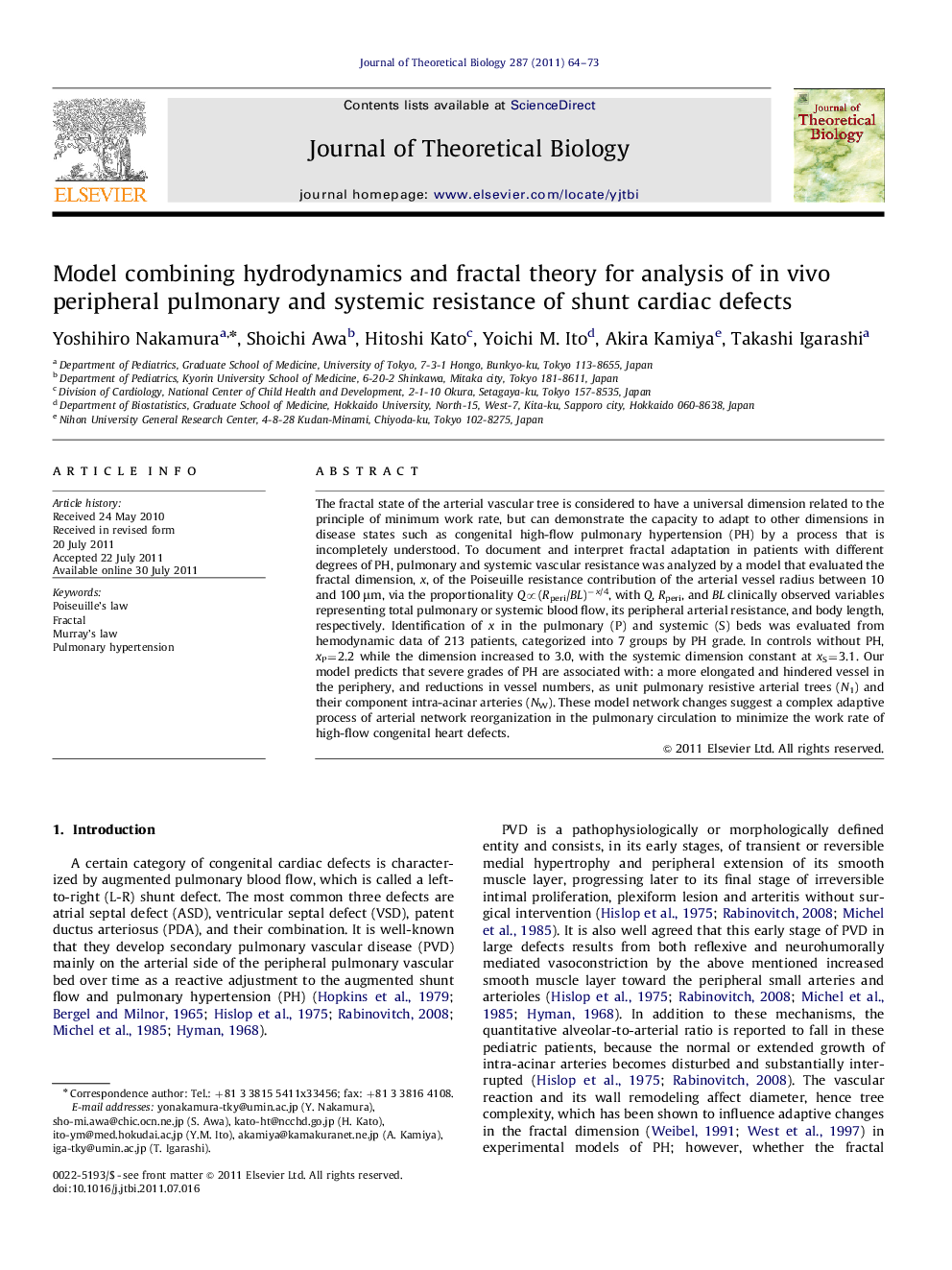| کد مقاله | کد نشریه | سال انتشار | مقاله انگلیسی | نسخه تمام متن |
|---|---|---|---|---|
| 4496927 | 1623923 | 2011 | 10 صفحه PDF | دانلود رایگان |

The fractal state of the arterial vascular tree is considered to have a universal dimension related to the principle of minimum work rate, but can demonstrate the capacity to adapt to other dimensions in disease states such as congenital high-flow pulmonary hypertension (PH) by a process that is incompletely understood. To document and interpret fractal adaptation in patients with different degrees of PH, pulmonary and systemic vascular resistance was analyzed by a model that evaluated the fractal dimension, x, of the Poiseuille resistance contribution of the arterial vessel radius between 10 and 100 μm, via the proportionality Q∝(Rperi/BL)−x/4, with Q, Rperi, and BL clinically observed variables representing total pulmonary or systemic blood flow, its peripheral arterial resistance, and body length, respectively. Identification of x in the pulmonary (P) and systemic (S) beds was evaluated from hemodynamic data of 213 patients, categorized into 7 groups by PH grade. In controls without PH, xP=2.2 while the dimension increased to 3.0, with the systemic dimension constant at xS=3.1. Our model predicts that severe grades of PH are associated with: a more elongated and hindered vessel in the periphery, and reductions in vessel numbers, as unit pulmonary resistive arterial trees (N1) and their component intra-acinar arteries (NW). These model network changes suggest a complex adaptive process of arterial network reorganization in the pulmonary circulation to minimize the work rate of high-flow congenital heart defects.
► The model of arterial network is designed with Poiseuille's and fractal theories.
► It is used to assess the fractal dimension x of pulmonary (P) and systemic (S) ones.
► Clinical data of left-to-right (L-R) shunt were analyzed to estimate x.
► xP increased from 2.2 in controls to 3.0 with pulmonary hypertension (PH).
► xS remained at 3.1 through controls and various degrees of PH.
Journal: Journal of Theoretical Biology - Volume 287, 21 October 2011, Pages 64–73